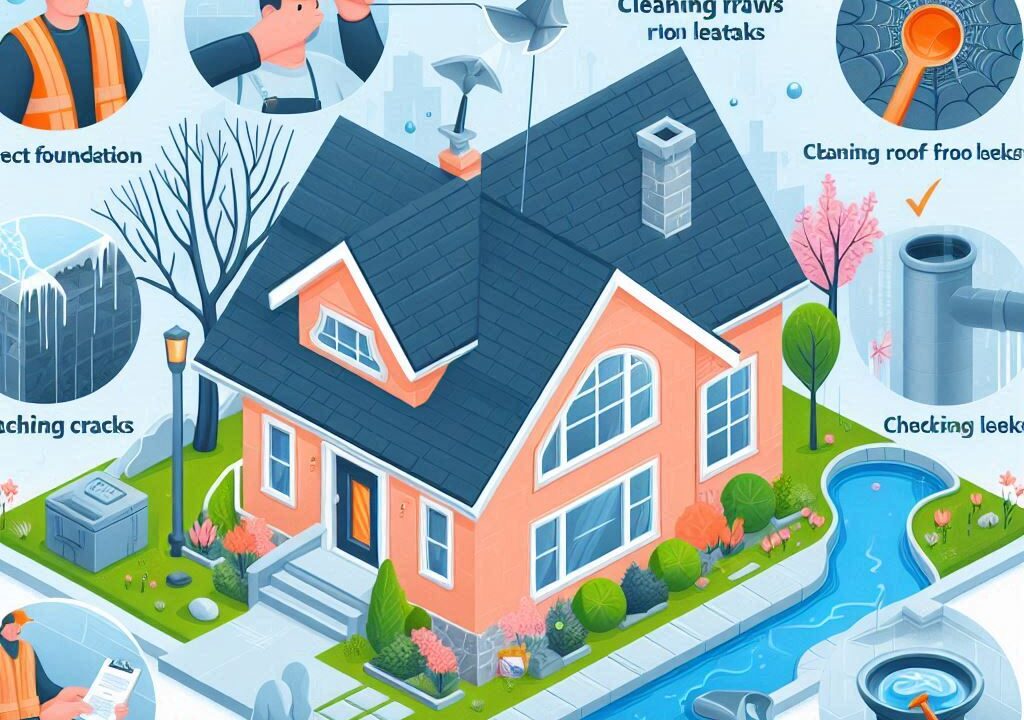Prepare Your Home for the Spring Thaw
With warmer temperatures and longer days, spring is officially here, bringing with it the melting snow that marks the end of a cold winter. As the season transitions, it’s essential to take steps to protect your home and prevent significant water damage during the thaw. Here’s what you can do:

1. Inspect Your Home’s Foundation for Spring Thaw Risks
As the snow melts, water can accumulate around your home’s foundation, increasing the risk of leaks, cracks, and basement flooding. To prevent this, clear any remaining snow and ice around the foundation, including window wells, basement entrances, and exterior vents, to ensure proper water runoff.
2. Seal and Repair Cracks Around Your Home
Inspect your home’s exterior for any cracks in the walls, foundation, or around windows. Sealing these gaps will help prevent moisture from entering the building. If you notice any leaks, even minor ones, it’s wise to call in a professional. A small issue can quickly escalate into costly and complicated repairs, so addressing it early can save you time, money, and stress.
3. Clean Out Your Drains and Gutters Before Spring Thaw
Remove any ice, leaves, or debris from your eavestroughs and downspouts. These are crucial components of your home’s drainage system, and clogs can cause significant damage. Additionally, check any nearby street drains, clearing them of leaves and garbage to ensure that runoff water from the melting snow can flow freely. Regular maintenance of gutters and drains ensures that water is safely diverted away from your home.
4. Watch for Overhead Leaks
If your roof has any existing damage, the thawing process may expose it. As snow and ice melt, you may notice water spots on your ceilings, indicating that moisture is entering through damaged roofing. Don’t forget to check your attic for signs of leaks, such as damp insulation, water stains, or a musty odor. Early detection is crucial, and addressing these issues now can help you avoid more extensive and expensive repairs.
5. Inspect Your Home Systems
Before you use your air conditioner for the first time this season, take a moment to inspect it and ensure it’s working efficiently. Look for any visible signs of wear or damage, and test the system to make sure it’s cooling properly. This is also a great time to tackle other maintenance tasks, such as replacing furnace filters and changing the batteries in your smoke and carbon monoxide detectors. These small actions contribute to a comfortable, safe, and energy-efficient home year-round.
6. Review Your Insurance Coverage
Spring thaw can lead to an increased risk of flooding, water damage, and sewer backups, especially in areas with heavy snow accumulation or older drainage systems. It’s a good idea to review your home insurance policy to ensure you’re protected against these types of damages.
Most standard homeowner policies do not automatically include flood or sewer backup coverage. If melting snow causes your basement to flood or if stormwater backs up into your home, you may be responsible for the repair costs unless you’ve added the appropriate coverage.
Reach out to your insurance provider to review your current policy and consider adding coverage options such as overland water, sewer backup, and sump pump failure. A small monthly premium could save you thousands of dollars in potential damage and restoration expenses.
By following these steps, you can ensure that your home is ready for the spring thaw and minimize the risk of water damage this season.

